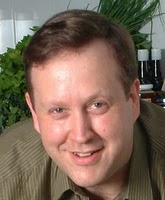 Last week, the results of the Medical Tourism Climate Survey 2010 was presented by Keith Pollard, Managing Director of Intuition Communication, at the European Medical Travel Conference in Venice, Italy.
Last week, the results of the Medical Tourism Climate Survey 2010 was presented by Keith Pollard, Managing Director of Intuition Communication, at the European Medical Travel Conference in Venice, Italy.
The survey was completed online by 257 representatives of medical tourism business from 55 different countries. A cross section of medical tourism agencies and facilitators, business consultants and hospitals were surveyed with cosmetic surgery, orthopaedic surgery and dental treatment among the most common services provided by respondents. However, Intuition Communication admits that the reserach is not perfect, stating that it is based on the views of 257 individuals and there may be significant areas of sample bias in the research.
The most higly represented countries in the survey were the USA, India, UK, Hungary and Turkey, and most of the surveyed business were small organisations employing less than five people and handling less than 50 medical tourist per year.
The leading medical tourism destinations
According to the medical tourism facilitators, the leading medical tourism destinations are India, Thailand, USA, Hungary and Malaysia. The countries seen as the leading source of patients both now and in the future are the USA, UK and the Russian Federation. Countries seen as providing the best overall service to patients are Thailand, India, and Singapore. In five years time, the same countries will still be the leading medical tourism destinations.
Current market
There seem to be mixed views about the current market, with over 50 percent believing that the market has declined or remained static in the past twelve months. This is probably due to the economic climate. Around half of the organisations have seen no growth or a decline in their business over the past year, allthough 47 percent state that their business situation is good or very good. Many has a positive outline of the future, believing that the overall market will grow in the next twelve months. The markets that are viewed with a very positive outlook are dental and cosmetic surgery markets.
Challenges
However, there are significant challenges and major problems facing organisations involved in medical tourism. The key issues are:
- Competition
- Marketing issues
- Insufficient demand
- Insurance and liability issues
- Lack of quality standards and international standards
- Lack of professionalism within the industry
Patient Choice
The main factors considered to influence patient choice are:
- Expertise and qualifications of the doctor/dentist
- Comments and ratings by other patients
- Fluency in the patient’s language (English, French and German are the most commonly supported languages within the destination countries)
Conclusion
Through this survey, Intuition Communication concludes that medical tourism can best be described as an industry in its infancy. It is still a young and developing market that lacks sophistication and direction. So far it is higly fragmented with many new entrants and few major player.
What is your take on the growing Medial Tourism field and where the market is heading? Please comment below or on our Facebook page. Don’t forget to pre register on Novasans, to find more information about medical tourism.






